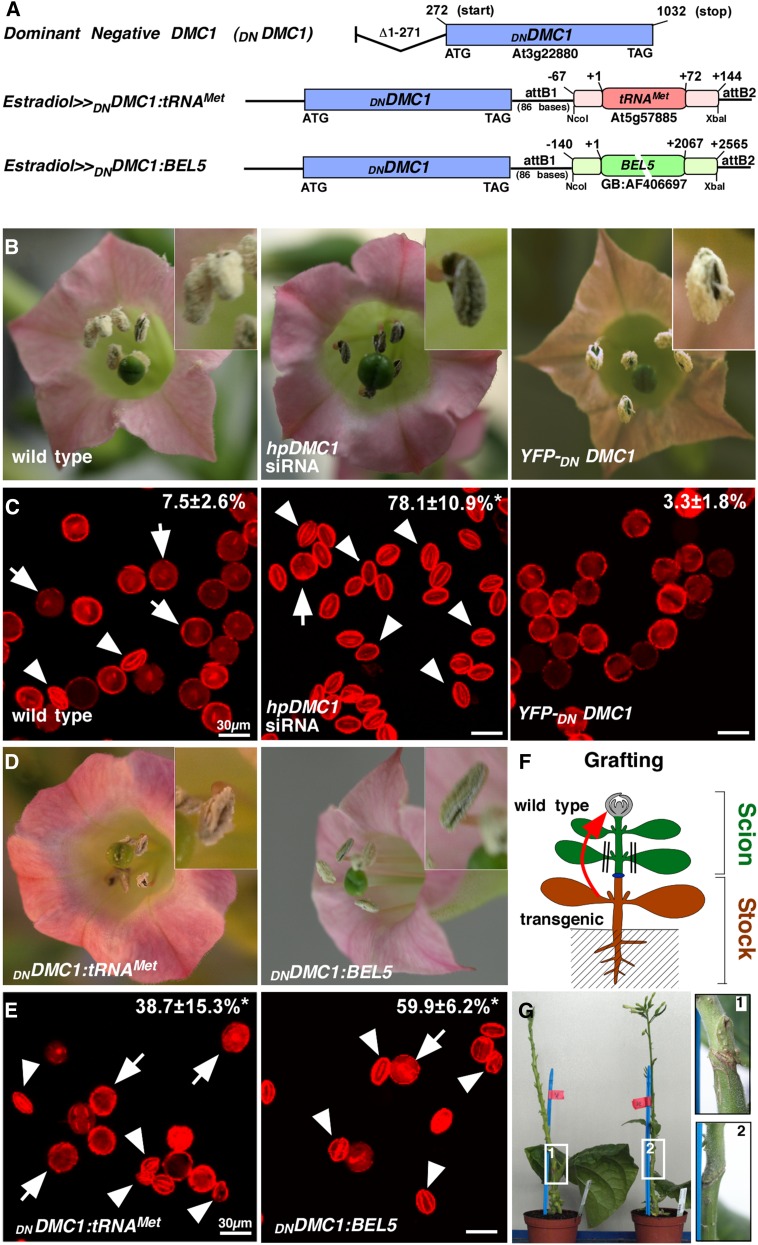Figure 1.
Dominant-Negative DMC1 as a Reporter Construct Causes Male-Sterile Flowers.
(A) Schematic drawing of the DNDMC1 RNA fusion constructs used. Arabidopsis DNDMC1 codes for a truncated protein lacking the N-terminal 92 amino acids and dominantly interferes with meiosis resulting in misshaped pollen and partial male sterility. The DNDMC1 coding sequence was fused to graft-mobile potato BEL5 sequences or phloem tRNAMet at the 3′ UTR to evaluate their potential to trigger DNDMC mRNA transport over graft junctions.
(B) to (E) Fertile anthers of wild-type tobacco plants show regular pollen production with minimal abnormally shaped pollen (2 to 3%), whereas hpDMC1 siRNA transgenic tobacco plants produce high numbers of abnormally shaped pollen and are sterile as previously described (Zhang et al., 2014). YFP-DNDMC1 transgenic plants have normal pollen production similar to the wild type because the N-terminal YFP fusion abolishes the dominant-negative effect of truncated DMC1. Transgenic plants expressing DNDMC1 fused with tRNAMet or BEL5 at the 3′ UTR exhibit increased male sterility.
(C) and (E) Propidium iodide-stained pollen harvested from transgenic plants were imaged by confocal laser scanning microscopy and evaluated by an automatic imaging analysis algorithm to count abnormally shaped pollen (Zhang et al., 2014) indicated by percentage numbers. Arrows indicate normal pollen; arrowheads indicate abnormally shaped pollen. Bars = 30 µm.
(F) and (G) Scheme of performed stem grafts to evaluate transport of mRNA to wild-type flowers.

